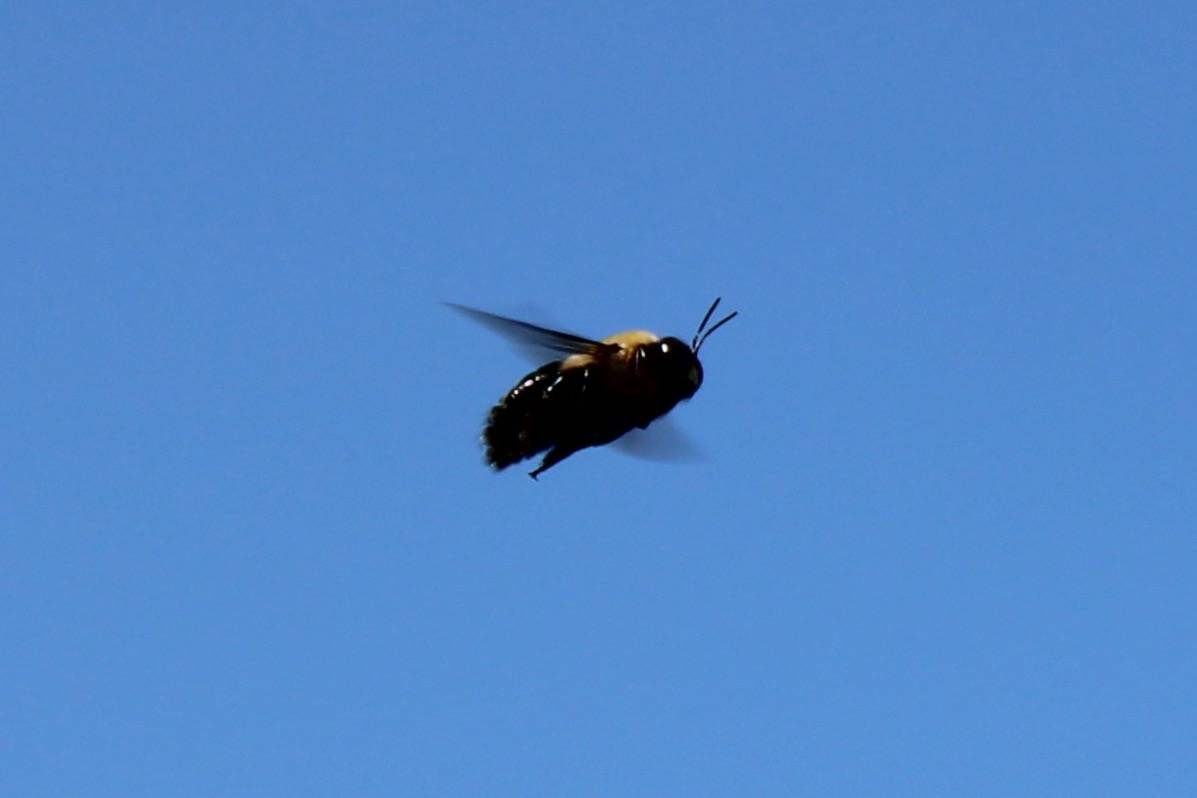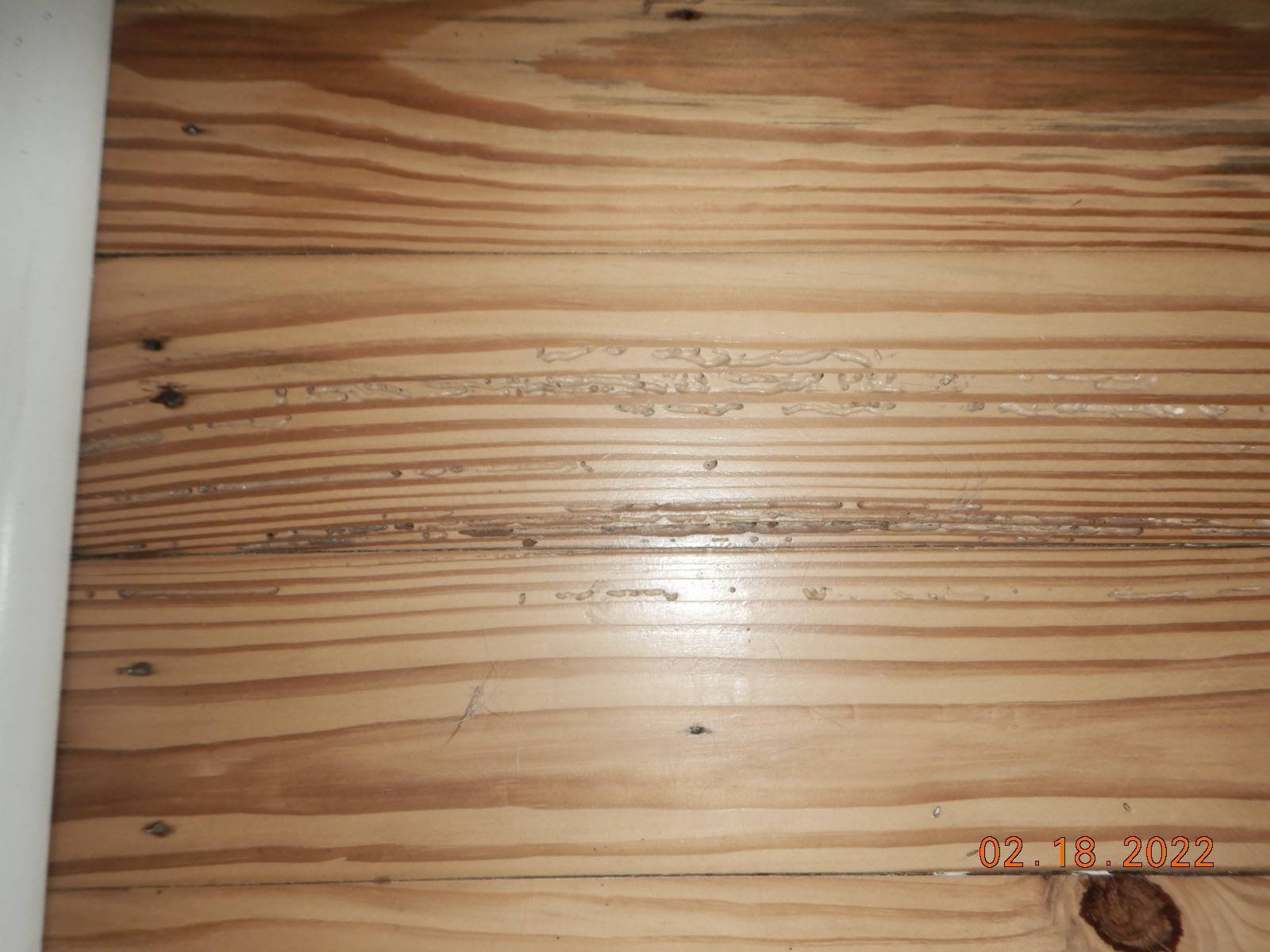Spring fills the air with all sorts of flying things. One such big fuzzy cute creature is the sky panda…otherwise known as the Carpenter Bee.
While most carpenters are very adept at working with wood to create works of art or functional furniture and structures, carpenter bees are very destructive.
Carpenter bees damage wooden structures by tunneling or burrowing into decks, rafters, fences, eaves, fascia, wood siding, outdoor furniture and in some cases window frames and doors to create a protected nest for their sky pandas cubs to hatch and grow.
The carpenter bees don’t necessarily destroy property, but they damage it and it becomes unsightly. In today’s seller’s real estate market, holes in the overhang above an entryway or on a back deck can immediately take away from curb appeal and lower the value of the offers to get thrown your way. The hole also potentially gives termites and other pests easier access to the tasty wood inside the burrow once they have vacated.

Let’s face it…your home is delicious. According to the University of Kentucky’s entomology department, carpenter bee’s favorite wood to build a nest in is unpainted, or weathered wood. They prefer softer woods like redwood, cedar, cypress and pine…mmmmm. Painted or pressure-treated wood is less likely to be carved up.
Telltale signs of carpenter bee activity (other than ⅜” inch diameter holes everywhere) include tiny piles of sawdust below a hole. Carpenter bees poop a lot too and their droppings leave stains.

Carpenter bees do not damage a house as horribly or quickly as termites do, but over time, the number of nests increase causing noticeable alterations to wood structures. Although carpenter bees don’t destroy as quickly as termites do, the repairs that they inflict can be costly. The diameter of the bee’s hole isn’t necessarily very wide, but a determined sky panda can burrow an inch deeper every 5 days of unencumbered chewing. Some tunnels can be up to a foot deep in soft wood, which weakens structures and exposes it to more destructive forces like water or termites.
Paramount Pest Control technicians can help by treating the holes. It is best to call a technician in the early spring while most of the bees are still hibernating.
Once a technician treats a nest, by the next day the bees should have run (flew) off roughly 24 hours later. The tunnels left behind can be filled in and painted over.
To get ahead of the cutest flying horde that will undoubtedly damage your home and cost you significant amounts of stress, time and money, call Paramount Pest Solutions at 228-896-PEST (7378) or email at [email protected]


